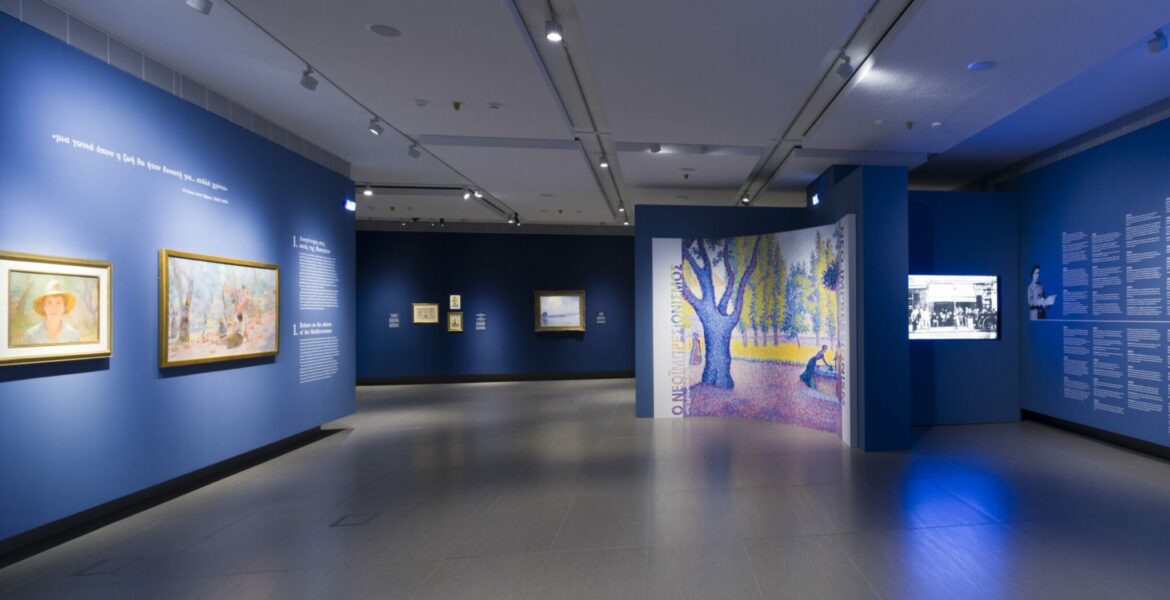Basil & Elise Goulandris Foundation takes us on an optimistic, sunny journey through the inspired gaze of the Neo-Impressionists.
The winter haze, the grey of the cloudy Attica sky and that imperceptible melancholy that accompanies us after the holidays suddenly disappeared when passing the entrance of the Basil & Elise Goulandris Foundation last Wednesday, January 10, the day the first art exhibition of the year was inaugurated, a comprehensive tribute to the Neo-Impressionism movement.
The soul is flooded with light in front of the 55 works gathered by the great Greek cultural institution in collaboration with leading museums and institutions in Europe, such as Musée d'Orsay, National Gallery of London, Center Pompidou, Musée des Beaux-Arts de Besançon, Musée de Grenoble, Musée National d'Archéologie, d'Histoire et d'Art – Luxembourg and Musée des Arts Décoratifs as well as private collectors, most of which are presented for the first time in Greece.
This exceptional exhibition introduces the general public to the movement that diverged from Impressionism, receiving the name originally proposed by the French art critic Félix Fénéon, clearly separating the two artistic trends.
The visitor has the opportunity to admire, gathered in the same space, works by Paul Signac, Henri-Edmond Cross, Maximilien Luce, Théo van Rysselberghe, Henri Matisse, Henri Manguin and Louis Valtat, which together give substance to the second chapter of Neo-Impressionism, such as unfolded after 1891 and the sudden death of its founder, Georges Seurat. As we can see with the present tribute, this second phase, which flourished on the shores of the Mediterranean and was led by Signac, highlighted new geographical and artistic horizons.
With Cross leading the way at the end of the 19th century, discovering first the Cabochon and then St. Clair on the Cote d'Azur, the Mediterranean climate that people initially favoured with health problems is attracting more and more art lovers.
Those fascinated by bright colours, light and peaceful rhythms away from the encroachment of industry and tourism express themselves with a painting now deeply rooted in the senses and subjectivity. The contact with the Mediterranean sun, as this exhibition reveals, inspires the movement's artists to deepen their visual searches, to use more vivid colours and more contrasts.
The Cote d'Azur is gradually turning into a large, open-air artistic workshop.
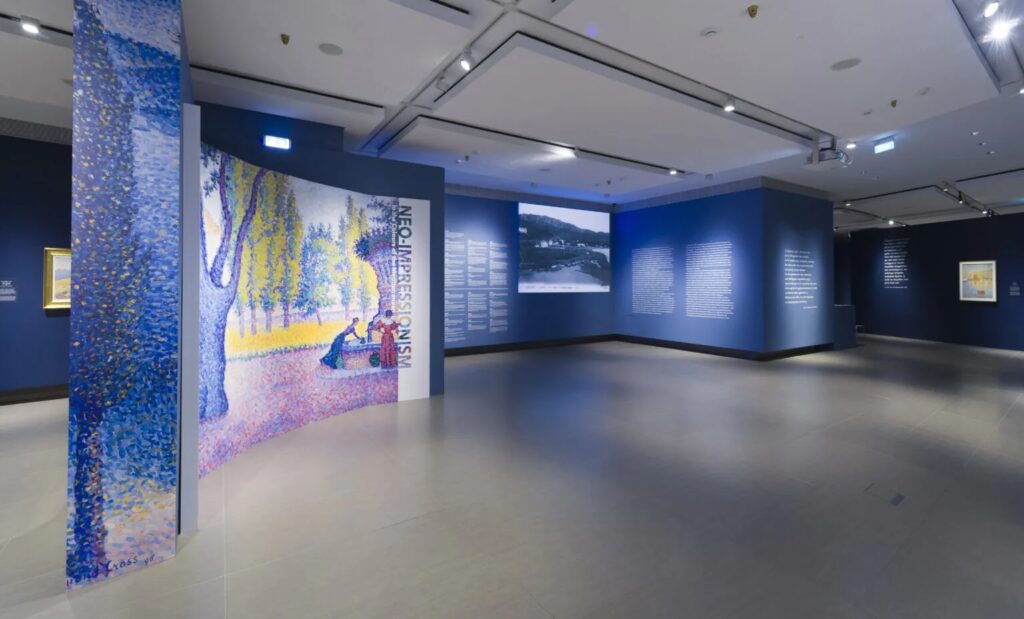

Following each artist's artistic journey, we too discover coastal paradises such as Lavandou, Collioure, Cassis, Saint-Tropez, Antibes, Marseille, Cavalier, Agaï, Antior, and then even further afield, Venice and Istanbul.
Observing the paintings on display, it is obvious that they overflow with optimism, are bathed in light, and are unique mosaics of colours.
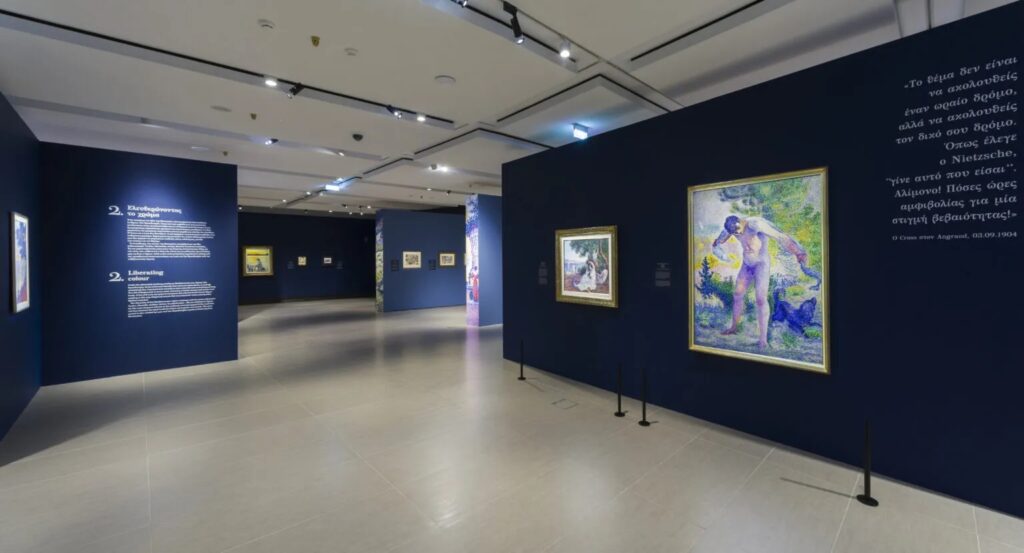
Indeed, by getting closer to them and seeing the way in which, in Neo-Impressionism, the dots of colour grow and, in some cases, become mosaics, one realises that the works are indeed reminiscent of mosaics from antiquity or Byzantine times, even joyful collages of colourful confetti.
What is certain is that looking at the paintings from afar and very close, one feels great emotion.
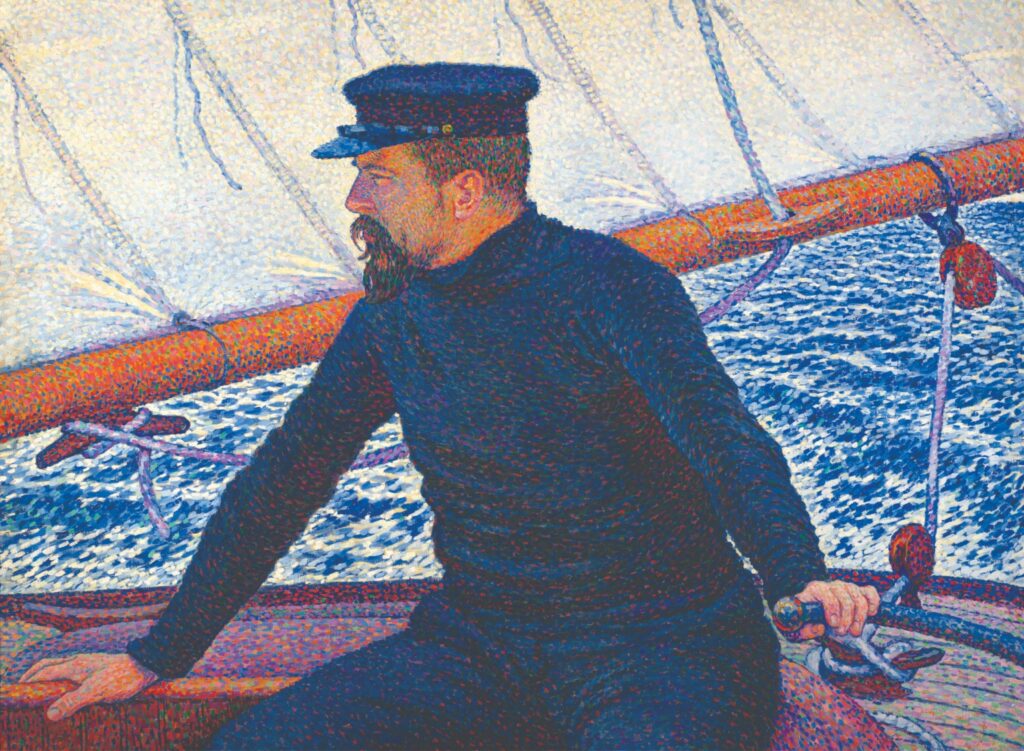

Visitors deserves to stop at works such as "Saint Tropez. Sunset over the city" by Signac, depicting the road leading to the then small fishing port, a road that today bears the painter's name in honour, or Luce's "Port of Saint Tropez", which, unlike Signac, avoids distant view of a deserted harbour, depicting with its small, meticulously placed dots a wharf full of life and movement, yet in a work that expresses calmness, sweetness and peace.
The port of the same seaside town also stars in one of the masterpieces of the exhibition, the 1895 work "The Red Buoy", one of Signac's highlights, with its geometrically shaped background, the calm reflections of the sea and a buoy in the foreground to peak the tension and have on it - despite the title stating the opposite -, all the colours of the painting.
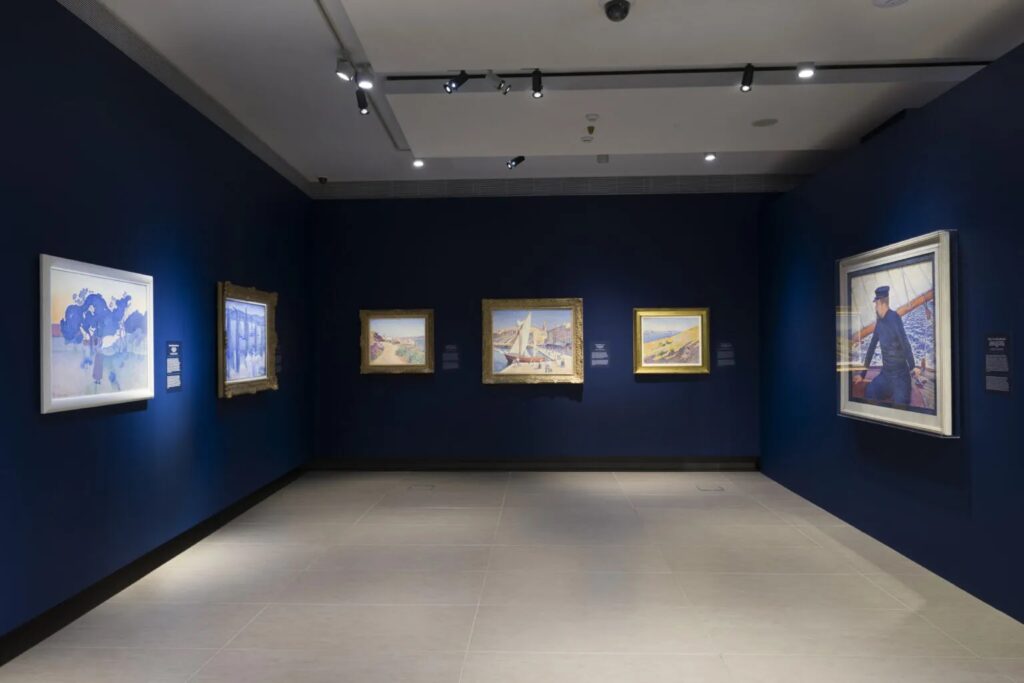
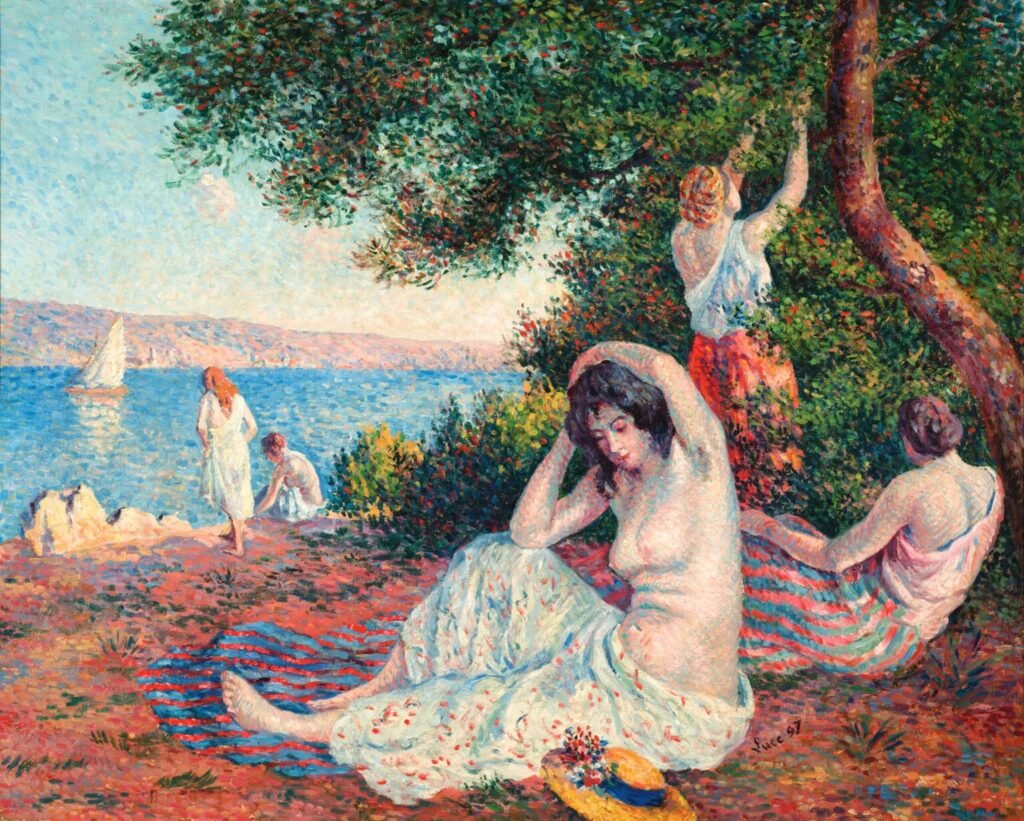
Dramatic colour intensity also distinguishes Valtat's 'Red Rocks at Agai', with the volcanic porphyry rocks that inspired many of his works, making the inspiration from nature visible, but also the dialogue of complementary colours revealing a clear influence from Signac.
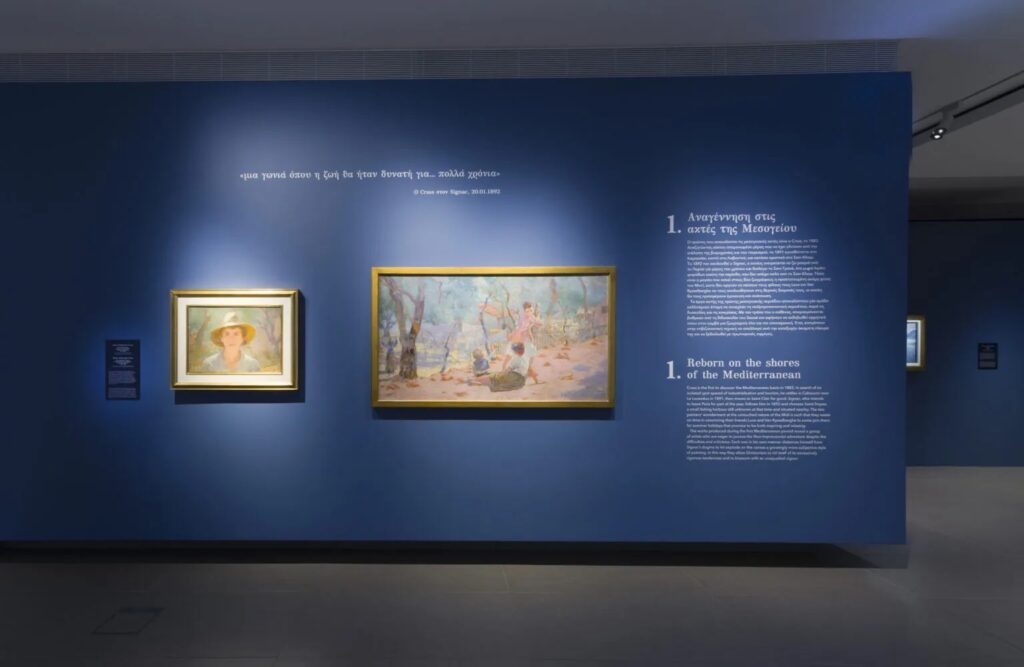
The exhibition also presents a series of watercolours, a technique to which Signac devoted himself with real zeal and enthusiasm. This is the technique of travellers, which allowed artists to travel lighter.
In particular, Signac emerged as a master watercolourist with a rare ability to capture the beauties of the moment.
His "pleated" strokes - very different from those he applied in his paintings - are full of energy, dynamics and unprecedented vigour, while his watercolours capture his unique view of landscapes and nature and reflect his psyche.
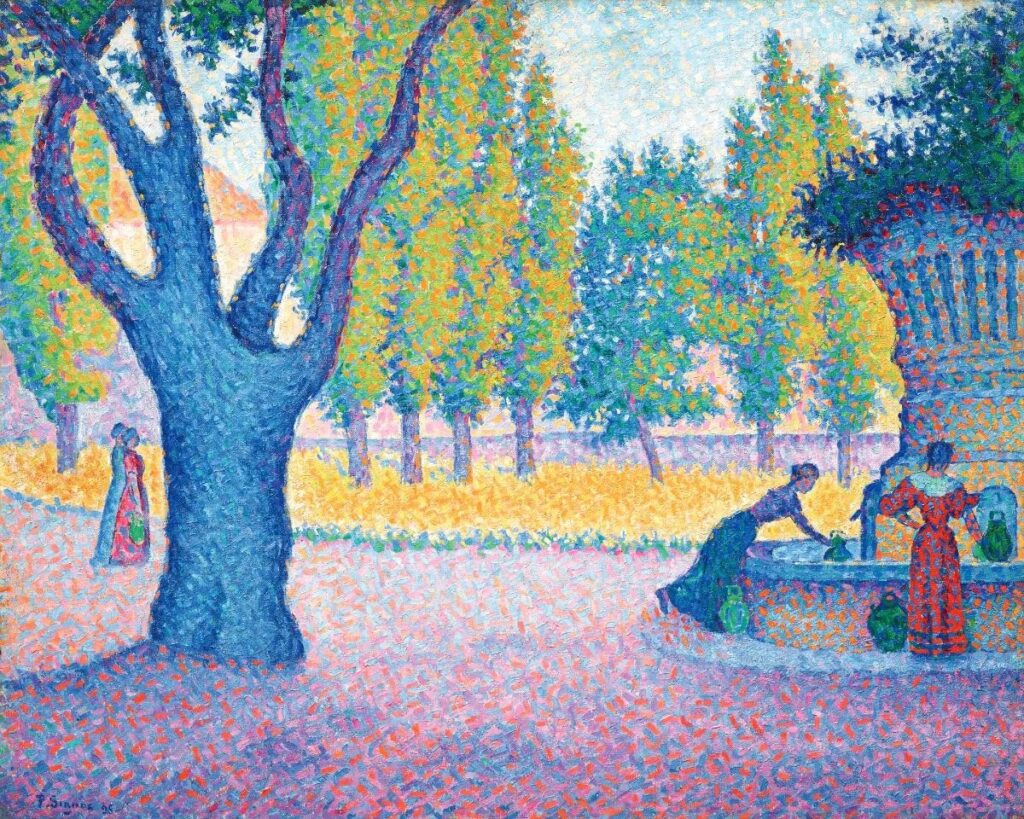
Paul Signac (1863-1935), Saint-Tropez. Fountain in the Place de Lis, 1895. Oil on canvas | 65 × 81 cm. Private collection
The enchanting journey through the Mediterranean landscapes of the neo-impressionists concludes with the first experiments of the future fauvists and the dialogue of the already established and mature artists of the Signac circle with them.
The periodic exhibition dedication to the artistic movement of Neo-Impressionism will last until April 7, 2024, and will undoubtedly be one of the most important of this year.
Basil & Elise Goulandris Foundation Museum of Contemporary Art
Address: 13 Eratosthenous, Athens
Exhibition duration: 10/1 - 7/4/2024
Opening hours: Monday, Wednesday, Thursday, Saturday & Sunday: 10.00-18.00, Friday: 10.00-20.00, Tuesday closed
General Admission to the Permanent Collection and the Temporary Exhibition - €18
Admission to the Temporary Exhibition €12
READ MORE: Duran Duran: The beloved band is coming to Athens this summer.

